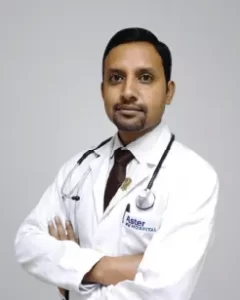
Dr. Amitesh Anand, Surgical Oncologist, HCG Abdur Razzaque Ansari Cancer Hospital Ranchi
Breast cancer is the most common cancer diagnosed among women in India. Breast cancer occurs in both sex but in male it accounts for less than 1% of all cases of breast cancer. It is treatable if diagnosed early. Localized cancer can generally be treated before it spreads outside the breast. But once the cancer begins to spread, treatment becomes more complicated. Early detection, better approach to treatment and better understanding of the disease has led to increased survival rates and decreased death rate.
Breast cancer usually begins either in your glands that make milk known as lobular carcinoma or the ducts that carry it to the nipple called ductal carcinoma. It can grow larger in your breast and spread to nearby lymph nodes or through your bloodstream to other organs.
The most common symptom of breast cancer is growth of a lump which is a painless, hard mass that has irregular edges. They can even be painful. It is always important to have breast mass, lump, or breast change checked by a specialist.
Other symptoms to watch out are:
- Lump or thickening of breast
- Change in size shape or appearance of breast
- Changes to the skin, indrawing of nipple or ulceration of skin
- Redness or roughness of skin over breast
- Nipple discharge that can be bloody or clear
These changes may be noticed while performing monthly breast self-exams. By performing breast self-exams, you will become familiar with the normal monthly changes in your breasts.
Risk factors include:
- Increasing age
- Personal history of breast cancer
- Personal history of breast condition like LCIS or Atypical hyperplasia
- Family history
- Inherited genes
- Radiation exposure
- Obesity
- Early menarche
- Age at first childbirth – childbirth after 30yrs have increased risk breast cancer
- Post-menopausal hormone therapy
- Alcohol consumption
There is no definite way to prevent breast cancer. But there are things that can help in lowering the risk such as changing risk factors that can be controlled by making certain changes in daily life to help reduce risk of breast cancer
- Breast self-examination for breast awareness – women may become familiar with their breast. If there is new change, lump or unusual sign doctor consultation should be taken promptly.
- Clinical breast examination
- Breast screening by mammography in women above 50yrs
- Limitation of alcohol consumption
- Daily exercise of at least 30 mins
- Limit use of post-menopausal hormone therapy – risk and benefit should be discussed with doctor in women who experience bothersome sign and symptoms of menopause.
- BMI – maintain a healthy weight, reduction in calorie intake and increase in exercise reduces the risk
- Healthy diet – extra virgin olive oil and mixed nuts Mediterranean diet like fruits, vegetables, whole grains, legumes reduce the risk of breast cancer
Breast cancer is diagnosed during a physical exam, by a self-examining the breasts, mammography, ultrasound testing, and biopsy. Women should begin annual breast screening between 40-44 years of age. Women aged 45 and older should have a screening mammogram every year.
Treatment depends on several factors, including the type and stage of cancer, person’s sensitivity to hormones, age, overall health of the individual and other medical conditions. Treatment generally follows within a few weeks after the diagnosis. Breast cancer diagnosis and treatment are best achieved by a team of experts. The specialist needs to evaluate the advantages and limitations of each type of treatment for each patient to develop the best approach.
Chemotherapy, Neoadjuvant chemotherapy, Radiotherapy, Mastectomy, Conservative breast cancer surgery, Adjuvant systemic therapy andHormone therapy are certain options used to treat breast cancer.
A variety of things influence breast cancer risk including family history and other known risk factors. Screening can help catch it early and the earlier it’s diagnosed, the more treatable it is. The longer it takes to diagnose a breast cancer, the more difficult treatment becomes.






